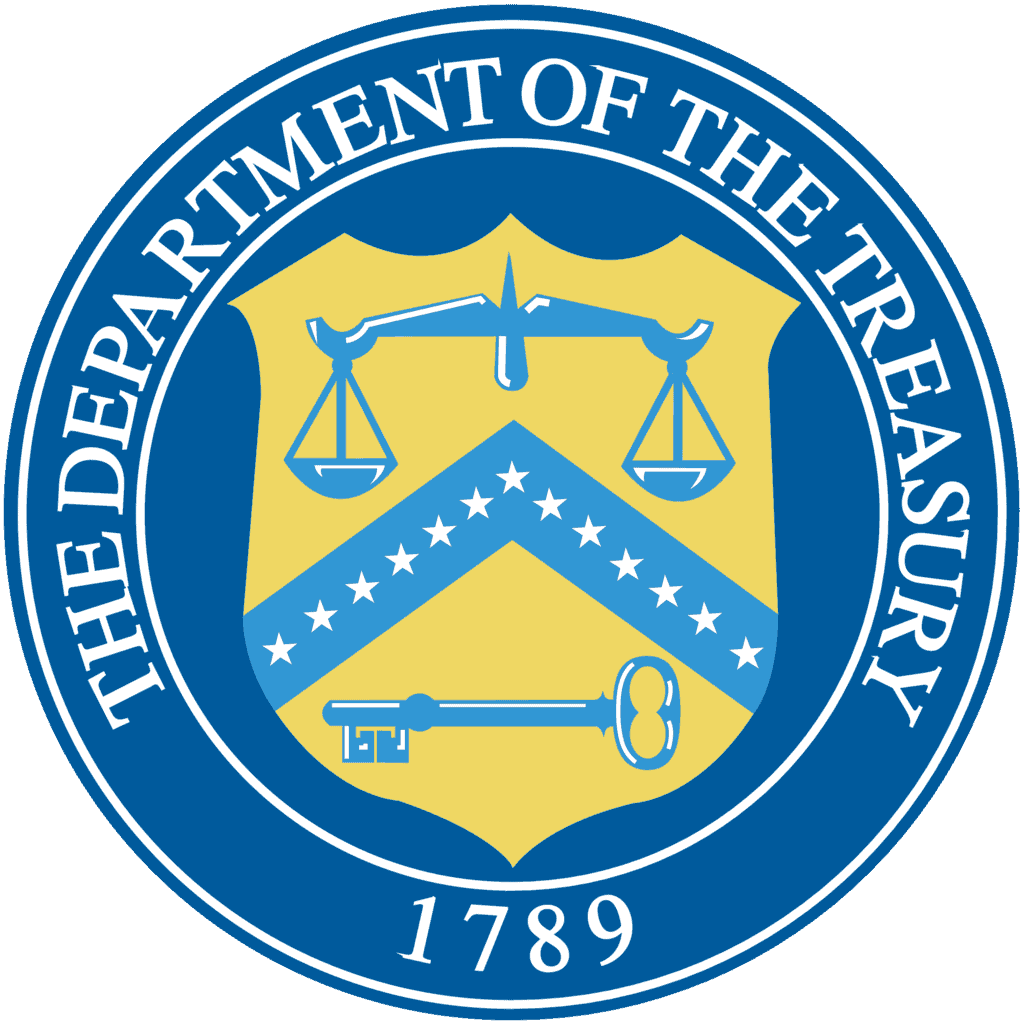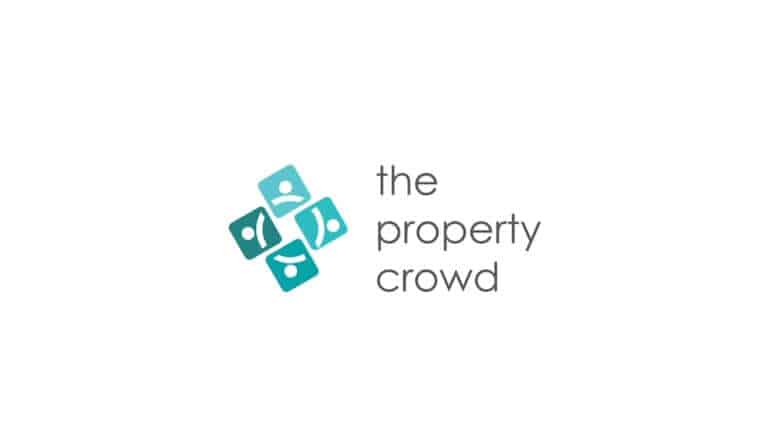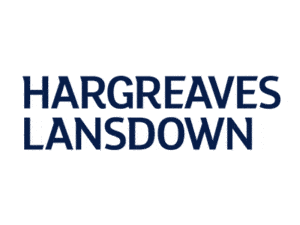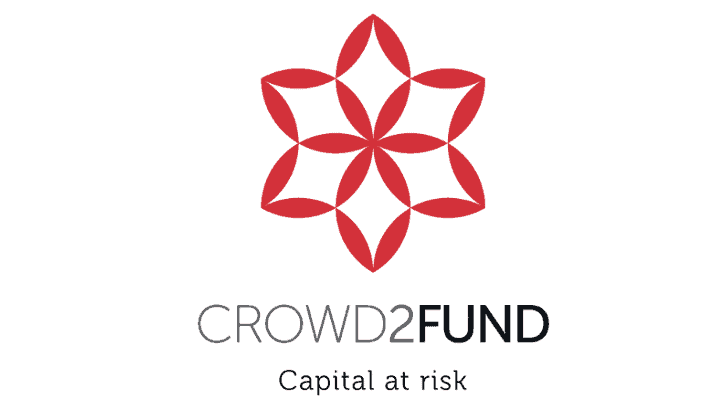How to Invest $100,000 – 15 Best Ways in 2021
 Do you currently have $100,000 in the bank that you would like to invest, but not too sure where to start? The key thing to remember is that leaving the money in the bank is going to earn you very little interest. In fact, with most major banks now paying less than 1% per year in interest, you’d actually be losing money if you take inflation in to account.
Do you currently have $100,000 in the bank that you would like to invest, but not too sure where to start? The key thing to remember is that leaving the money in the bank is going to earn you very little interest. In fact, with most major banks now paying less than 1% per year in interest, you’d actually be losing money if you take inflation in to account.
Alternatively, by making some really smart investments, you can grow your money a lot faster.
Here we present to you 15 smart ways to invest $100,000 in 2019. We’ll explain how each investment works, how much you’re likely to make, and how you can make an investment today.
If you’re instead looking to invest a bit less than $100,000, why not check out our guide on how to invest $10,000? If that’s too much for you, we’ve even covered how to invest $1,000.
-
-
1. Real Estate – 5-15% per year (rental income and appreciation)
Real estate is potentially the smartest way to invest your $100,000. With the average U.S. property now costing in the region of $226,000, your $100,000 won’t quite be enough to buy a house outright. However, what you can do is use a crowdfunding platform. You essentially own the property at a percentage proportionate to the amount you want to invest. Even better, you can spread your $100,000 investment across multiple properties to mitigate the risk.
How to invest in real estate with $100,000?
One of the best real estate crowdfunding platforms is that of Property Partner. The platform sources all of the deals on your behalf, subsequently charging a 2% transaction fee for their efforts. You’ll receive your cut of the monthly rental payments (paid into your account every month), and when the property is eventually sold (usually a minimum of 5 years), you’ll receive your investment back at the current market rate. This means you’ll also make money as the value of the property increases.
Step 1: Register with Property Partner
Step 2: Confirm your identity (Upload a copy of your passport/driving license)
Step 3: Browse the many property investment opportunities
Step 4: Enter the amount that you want to invest
Step 5: Deposit funds (debit/credit card is best)
Step 6: Complete your purchase
Step 7: Your share of the monthly rental payments will be paid into your PropertyPartner account
Step 8: When the house is sold, you’ll receive your investment back at the current market value
Pros and cons of investing in real estate
Pros:
- Very safe long-term investment
- Earn monthly interest in the form of rental payments
- House prices usually increase every year
- Regardless of how the economy is performing, people will always need to rent homes
- Backed by a real-world asset
Cons:
- Not suitable for short term investments
2. U.S. Treasury Bonds – Around 1-2% per year
Much like in the case of real estate, U.S. Treasury bonds are a super-safe investment. In fact, unless the U.S. government ceased to exist, you would never lose your money. When you buy bonds from the U.S. government, you are essentially lending them money. You will receive interest payments for loaning the money out, which usually amounts to 1-2% per year. You can invest in U.S. Treasury bonds from 3 months, all the way up to 100 years. The longer the bond term, the higher the interest yield.
How to buy U.S. Treasury Bonds?
You can buy U.S. Treasury bonds directly from the website of the U.S. Treasury’s Office. The platform allows you to buy bonds from as little as $100. When you receive your annual interest payments, these will be paid directly into the account you create with the U.S. Treasury Office.
Note: You can all-but guarantee that you will not lose money as long as you hold onto the bonds until they mature. If you attempt to cash out early by selling them on the secondary markets, then you could get less than what you paid.Step 1: Register on the U.S. Treasury Office website
Step 2: Verify your identity
Step 3: Choose the length of the bonds (maximum of 10 years is best)
Step 4: Pay for your bonds
Step 5: When the bonds expire, you'll receive your original investment, plus interest payments. You can then withdraw the funds to your bank account
Pros and cons of investing in U.S. Treasury Bonds
[/su_note]Pros:
- Super safe investment
- Always get paid on time
- Choose how long you want to invest
- Easy to buy
- No fees or commissions
Cons:
- Interest payments are low
- If you try to sell the bonds on the secondary market, you could lose money
3. Peer-to-Peer Lending – 4-7% per year
Banks have been lending money to consumers and businesses for hundreds of years. However, if you’ve got $100,000 at your disposal, why not consider doing the same thing? You can now do exactly this through peer-to-peer lending platforms. In a nutshell, you lend money directly to third parties in return for higher-than-usual interest rates.
The peer-to-peer platform will perform the necessary credit checks on your behalf, meaning you can view the risk levels before making an investment. Although peer-to-peer lending carries more risk, you do have the options of diversifying across hundreds, if not thousands, of individual loans.
How to invest in peer-to-peer lending?
You’ll want to use a highly established peer-to-peer lending platform like Lending Club. In fact, the firm is recognized as the first regulated platform to offer such a service to U.S. residents. The platform has thousands of customers looking for financing, so you can easily spread your risk.
Step 1: Open an account with LendingClub
Step 2: Answer some questions to ensure you are eligible to lend-out money
Step 3: Verify your identity
Step 4: Browse the many different loans on offer. Each option will have a risk level attached to it and a fixed yield
Step 5: Once you’ve decided which loans you want to back, deposit some funds
Step 6: Complete your investment
Pros and cons of investing in peer-to-peer lending
Pros:
- High-interest yields of between 4-7% annually
- Minimum investment of just $25 per loan agreement
- Diversify across thousands of loans
- Platforms like Lending Club perform credit due diligence on your behalf
Cons:
- Higher risk levels, which are reflected in the higher interest rates on offer
4. Help Fund Property Developers – 8-12% per year
If you like the sounds of earning interest by lending money out, but have a slightly higher appetite for risk, then you might want to consider loaning capital to property developers. Such developers require financing to build a new property project and in return, pay very high interest. You can do this via a crowdfunding platform that performs the due diligence on your behalf. With annual interest payments averaging 8-12% per year, the loans are medium-to-high risk.
How to invest in property developers?
You’ll need to use a crowdfunding platform that specializes in the financing of property developers. The likes of the Property Crowd does just this, and they perform the required due diligence on the companies that require capital, before being accepted on to the platform.
Step 1: Open an account with the Property Crowd
Step 2: Deposit funds using a debit or credit card
Step 3: Spend some time looking at the different projects that need funding
Step 4: Choose how much you want to invest in your chosen project
Step 5: At the end of the term, withdraw your original investment (and interest payments) back to your bank account
Note: Keep an eye on the health of the domestic real estate market that the respective property developer is building in. The chances of the developer defaulting on the loan will be increased if the local housing market takes a slump.Pros and cons of investing in property developers
[/su_note]Pros:
- High-interest payments of between 8-12% per year
- Minimize risk by backing multiple loans
- A good way of investing in the real estate space on a short-term basis
Cons:
- If the real estate market takes a slump, the developer could default on the loan
5. Mutual Funds – Aim for 10%+
If you want to get some exposure to the financial markets, then the safest way to do this is via a mutual fund. By investing your $100,000 into a fund, the institution will manage your investment on your behalf. This means that they’ll perform the required research, and buy and sell the investments as and when they see fit. The best mutual fund managers will aim to make surplus of 10% per year.
How to invest in mutual funds?
Investing your $100,000 into a mutual fund is very straightforward. In fact, you can do this via a reputable stock broker like Hargreaves Lansdown. Even better, by going through a broker, you can diversify your $100,000 across multiple funds. You’ll need to pay an annual maintenance fee of around 0.45%, however, this is good value when you consider that the fund manager will do all of the investing on your behalf.
Step 1: Open an account with Hargreaves Lansdown
Step 2: Deposit funds using a debit or credit card
Step 3: Head over to the funds section and decide which mutual fund you want to invest in
Step 4: Enter the amount you want to buy, and complete the trade
Step 5: You will receive dividends directly into your Hargreaves Lansdown account
Step 6: You can cash out your $100,000 investment at any time
Pros and cons of investing in mutual funds
Pros:
- Allow an experienced investor to invest on your behalf
- Mutual funds will diversify across multiple assets/companies
- Fees are low
- Cashout your investment at any time
- You still receive dividends, if applicable
Cons:
- Unable to choose your own investments
6. Low-Risk Savings Bonds – 1-3% per year
If you want to put your money somewhere safe, but still earn more than traditional high street banks will pay, then you might want to consider savings bonds. These operate in a similar way to a savings account, however, the interest on offer is higher. You’ll receive monthly or annual interest payments, and then your original investment back at the end of the term.
How to invest in Savings Bonds?
You’ll need to purchase savings bonds directly from a bank or building society. If you want to buy savings bonds from a UK institution, then it’s likely that you’ll be protected by the UK’s FSCS scheme. This means the first £85,000 (about $107,00) invested is protected by the UK government in the event that the institution collapsed. This effectively makes it risk-free.
An example of a good-value savings bond currently available in the UK is that of QIB UK. For just a 1 year term, you’ll get an annual interest yield of 2.05%, which is fully protected by the FSCS protection scheme.
Step 1: Open an account with QIB (UK)
Step 2: As QUB (UK) is a financial institution, you’ll need to verify your identity
Step 3: Decide how many bonds you want to buy, and then transfer the funds across via bank transfer
Step 4: At the end of the 1-year term, you can withdraw your investment (plus interest payments) back to your bank account
Pros and cons of investing in savings bonds
Pros:
- Super safe investment
- Usually protected by government savings protection schemes (like the FSCS in the UK)
- Earn monthly or annual interest
- Bonds usually range from 1 to 5 years
Cons:
- Interest yields are low, which is reflected by the low levels of risk
7. Foreign Term Savings Deposits – 8-10% per year
If you like the sounds of savings bonds, but you’re after a higher rate of interest, then it might be worth looking at what foreign banks can offer. Institutions usually label this as ‘term deposits’, however, they operate in exactly the same way as savings bonds.
For example, banks in Georgia will pay you a handsome 9-10% per year if you keep your investment in the country’s domestic currency. Some banks even allow you to take the interest upfront. Terms are usually in the region of 6-24 months. Take note, not only do you have the risk of the financial institution defaulting, but you also need to factor in currency fluctuations.
How to invest in Savings Bonds?
If you want to invest in foreign term deposits, you need to open an account directly with the institution. Some banks allow you to do this remotely without visiting the country. Here’s an overview of how the process works.
Step 1: Go to the institution’s website and open an account
Step 2: You will need to verify your identity, much like you would with a traditional bank
Step 3: Wait approximately 1-2 weeks for your account to be verified
Step 4: Decide which currency you want to hold with the institution (local currency pays the highest rates)
Step 5: Transfer funds to the institution via bank transfer
Step 6: Choose whether you want to receive interest yield upfront (if available)
Step 7: When the bonds mature, transfer the funds back to your nominated bank account
Pros and cons of investing in foreign term savings deposits
Pros:
- Really high-interest payments of around 8-10% per year
- Some institutions allow you to take interest yield upfront
- Investment terms usually between 6-24 months
Cons:
- Risk of default and currency fluctuations
- Need to hold savings in local currency to get the highest rates
8. Robo-advisors – Low-risk strategies aim for 5% per year
Robo-advisors are like virtual financial advisors that cost a fraction of what you would pay with a real-world advisor. The technology is based on machine learning and artificial intelligence, which allows you to make investments without needing to pick the stocks yourself. The risks are much higher than using a mutual fund, as you need to trust the technology. On the other hand, some robo-advisor platforms do not charge any fees.
How to invest in Robo-advisors?
You’ll need to find an established brokerage platform that offers robo-advisor services. One such example is M1 Finance. The platform allows you to build a portfolio of stocks, bonds, and funds, all of which are selected by the robo-advisor – free of charge. You can adjust the settings of the robo-advisor to meet your appetite for risk.
Step 1: Register an account with M1 Finance by providing a range of personal information
Step 2: Answer some questions regarding your financial circumstances (net worth, risk tolerance, etc.)
Step 3: Choose which account type you want (individual, joint brokerage, retirement or trust account)
Step 4: Deposit some funds
Step 5: Set-up your robo-advisor parameters (risk levels, auto-invest, etc)
Step 6: If you like the strategies that the robo-advisor suggests, then choose how much you want to invest
Pros and cons of investing in robo-advisors
Pros:
- Cutting-edge technology utilizes machine learning and artificial intelligence to make smart investments
- Adjust the settings to determine your risk
- Diversify across hundreds of assets
- Much cheaper than mutual funds or financial advisors
- Invest in the financial markets without having any experience
Cons:
- Returns are not guaranteed
9. Index Funds – Up to 10% per year – expect slumps along the way
If you don’t have the confidence or experience in trading individual stocks and shares, why you don’t you consider trading in in the stock markets? Known as index funds, you can now trade the performance of specific stock markets. For example, if you want to trade in the U.S. stock market, you can start by buying into an index fund that tracks the S&P 500. This represents the largest 500 companies listed on the U.S. stock markets.
10. Stocks and Shares – Up to 10% per year
If you have a firm understanding of how stock markets work, and you’re keen to make your own a few shares, then you might want to consider buying and selling stocks and shares. While on the one hand, the risks might be higher than using a mutual fund, however, if you’re a shrewd trader that knows that you’re doing, then you’ll be in full control of what companies to back.
11. Bond Funds – Aim for 3-5% per year
Did you know that financial institutions trade bonds on the secondary marketplace? They buy a full range of government and corporate bonds, and then sell them before they mature with the view of selling them at a premium. This is a highly skilled area of finance, however, you can now join the club by investing in a bond fund. They operate in a similar way to traditional mutual funds, however, instead of investing in stocks and shares, the fund will specialize purely in bonds.
How to invest in mutual funds?
The process of investing in bond funds is the same as a mutual fund. As such, you’ll need to go through a broker like Hargreaves Lansdown, which will allow you to choose the bond funds you want to invest your $100,000 in. You’ll also pay an annual maintenance fee in the region of 0.45%.
Step 1: Open an account with Hargreaves Lansdown
Step 2: Deposit funds using a debit or credit card
Step 3: Head over to the funds section then select bond funds
Step 4: Choose which bond funds you want to invest in
Step 5: Enter the amount you want to buy, and complete the trade
Step 6: The value of your investment will go up or down depending on how the bond fund performs
Step 7: You can cash out your investment whenever you like (early redemption fees could apply)
Pros and cons of investing in bond funds
Pros:
- Get exposure to the multi-trillion dollar bond trading space
- No experience needed as the bond fund manager will do everything on your behalf
- Access bond markets that would otherwise be difficult to reach
- Typically a low-risk investment
Cons:
- Bond funds rarely hold onto bonds until their maturity date, so you likely won’t receive interest
12. Finance a New Business Startup – Up to 15%
Although we’ve already covered peer-to-peer lending to individuals and real estate developers, the phenomenon also allows you to invest in new business startups. You essentially loan money to new and exciting companies that you believe will make it big. As these startups don’t have much in the form of trading history, the risks are much higher. However, to match the risk, you should expect to charge up to 15% for parting with your money.
How to invest in a new business startup?
You’ll need to use an established crowdfunding platform that specializes in new business startups. One such example is Crowd2Fund, who allows you to invest in newly established UK companies that require financing. You should do some research on the who the company is and what market they are looking to target before making an investment.
Note: Lending money to a company with virtually no trading history is a risky business. However, diversifying is a smart way to reduce your risk. Never invest your entire $100,000 into a single company.Step 1: Open an account with Crowd2Fund
Step 2: Deposit some funds by using a debit/credit card
Step 3: Take some time to scroll through the many different small businesses that require help with funding
Step 4: Choose how much you want to invest (minimum is £1000, so USD equivalent)
Step 5: Confirm the investment
Pros and cons of investing in small business startups
[/su_note]Pros:
- High annual returns of up to 15%
- Spread the risk across multiple companies
- Finance a company that you believe will make it big
Cons:
- You’ll need to pay some of your profits back to Crowd2Fund as a fee for using the platform
13. Buy a Franchise – Aim for 5–10% per year
If you’re currently sitting on $100,000, then you might want to consider buying a franchise. A franchise is where you open a branch of a successful business that is already established. For example, you could buy a Subway franchise in your local town. Although the fees associated with successful franchises can be hefty, you need to remember that you are investing in a brand that is already established. As such, there is no need to build up a loyal customer base. You’ll also receive support directly from the franchise provider, which is an added bonus.
How to invest in a franchise?
There are literally tens of thousands of business franchises available in the U.S. The fees could range from a few thousand dollars, all the way up to $100,000 plus for an established brand like McDonald’s or KFC. The best option is to browse the many franchise offerings at Franchise Direct.
Note: Unlike investing in the financial markets, buying a franchise is going to require 100% of your time. You need to ask yourself whether you can commit to running a business full-time.Step 1: Head over to the Franchise Direct website
Step 2: Browse the hundreds of franchise deals available
Step 3: Once you've found a franchise you're interested in, head over to the official website of the franchise company
Step 4: Meet with the franchise manager in your local area
Pros and cons of buying a franchise
[/su_note]Pros:
- Run your own business
- Buy a brand that is already established
- Good investment for a secure future
- Get assistance from the franchise provider when needed
Cons:
- You’ll need to dedicate 100% of your time to running the business
14. Forex Trading – Up to 10% per year
If you have a good understanding of how forex trading works, then you might want to consider trading full-time. A $100,000 starting balance would allow you to nip ultra-small profits, while still minimizing your risk. However, you need to remember that forex trading can be very risky if you don’t have any experience.
15. Pension – 20% tax relief
If you want to invest your $100,000 into your future, then it might be worth playing it safe and placing the cash into a pension pot. If you’re from the UK, the government will give you 20% tax relief on what you put in.
How to invest in a pension?
The easiest way to invest in a pension is to use a third party broker. You can do this easily with Hargreaves Lansdown, and you’ll still get your 20% tax relief. You won’t be able to touch your pension pot until you’re 55, so make sure that you won’t need to cash before this.
Step 1: Open an account with Hargreaves Lansdown
Step 2: Head over to the pension section
Step 3: Decide how much you want to invest (lump sum or regular payments)
Step 4: Leave the money to rest until you retire
Pros and cons of investing in a pension
Pros:
- A smart way to ensure you are financially secure when you retire
- Prevent yourself from spending the money elsewhere
- Get tax relief from the government
- No risk of losing the money in adverse investments
Cons:
- You won’t be able to touch the money until you retire
Bonus: Gold - Volatile, but long-term prospects of 5-10% per year
If you're the type of person that doesn't trust the global monetary system, or you fear that another financial crisis is imminent, then you might want to consider buying and selling Gold. If history has taught us one thing, it's that in times of market turbulence, securit traders flock to Gold. The key thing to remember is that Gold will always have value, not least because it has a finite supply.
5 things to remember before investing your $100,000
$100,000 is a significant amount of money. While we appreciate that you want to increase your money by making smart investments, you still need to understand the underlying risks. Before you part with your $100,000, make sure that you take note of the following.
- How long can you afford to keep your $100,000 tied-up?
When you have your money tied-up in an investment, you won’t be able to touch it. As such, you need to ask yourself how long you are willing to wait before you start seeing growth. If you want to invest long-term, then consider assets such as real estate or bonds. Alternatively, if you only want to invest for a short amount of time, then you’re probably best suited for peer-to-peer lending or forex trading.
- What is your appetite for risk?
Regardless of what investment you decide to choose, there will always be an element of risk involved. In a nutshell, the higher the expected returns, the higher the underlying risk. If you want to minimize your risk as much as possible, stick with low-risk investments like U.S. Treasuries or property. If you want to add some higher-risk assets to your portfolio, then consider peer-to-peer lending.
- How much money would you be happy to walk away with?
It is important that you make some short and long term targets before you invest your $100,000. Are you looking to make a bit of money on the side, or are you looking for annual gains of at least 10%? You need to set some realistic goals along the way, so that you can cash out your investment at the right time.
- How much experience and knowledge do you have in investing?
$100,000 is a huge amount to invest, so you don’t want to be investing in assets or markets that you don’t understand. If you’re a highly experienced investor – then great. However, if you have virtually no knowledge of the investment space, then you’re best off allowing somebody else to manage your money for you. If this is the case, think about investing in bond funds or mutual funds.
- Do you understand that markets are cyclical?
You need to understand that most markets are cyclical. This means that every now and then, the markets will go through a slump and lose value. This is especially true in the stocks and shares space. Certain real estate markets are also prone to frequent drips. Before you invest your $100,000, make sure that you are emotionally ready for the highs and lows of the investment sphere.
Glossary of Investment Terms
BondsA bond is a loan made to an organization or government with the guarantee that the borrower will pay back the loan plus interest upon the maturity of the loan term. It can be advanced to the national government, corporate institutions, and city administration. It is an investment class with a fixed income and a predetermined loan term.
Mutual FundA mutual fund is a professionally managed investment vehicle that pools together funds from numerous investors and invests it in such securities as stocks, bonds, and other money market instruments. They are headed by portfolio managers who determine where to invest these funds. They are highly regulated and invest in relatively low-risk money markets and in turn post lower rates than other aggressive managed funds.
P2P LendingPeer-to-peer lending (p2p lending) is a form of direct-lending that involves one advancing cash to individuals and institutions online. A P2P lending platform, on the other hand, is an online platform connecting individual lenders to borrowers.
BitcoinBitcoin is the legacy cryptocurrency developed on the Bitcoin Blockchain technology. It is a new form of money primarily developed to solve some of the inherent challenges associated with fiat currencies like inflation and over-production. It is virtual (online) cash that you can use to pay for products and services from bitcoin-friendly stores.
Index FundsAn index fund refers to the coming together of individuals to pool in funds that are then invested in the stock and money markets by professional money managers. The only difference between an index fund and a mutual fund is that the index fund follows a specific set of rules that track specific investments and index stocks.
ETFsAn Exchange-traded fund refers to an investment vehicle that is publicly traded in the stock exchange markets – much like shares and stocks. The fund is expert-managed and its portfolio comprises of such investment products as stocks, bonds, commodities, and more money market instruments like currencies.
RetirementRetirement refers to the time you spend away from active employment and can be voluntary or occasioned by old age. In the United States, the retirement age is between 62 and 67 years.
Penny StocksPenny Stocks refer to the common shares of relatively small public companies that sell at considerably low prices. They are also known as nano/micro-cap stocks and primarily include any public traded share valued at below $5.
Real EstateReal Estate can be said to be the land and buildings on a given property as well as other rights associated with the use of the property like the air rights and underground rights. Real estate can be either commercial if the land, property, and buildings are used for business purposes or residential if they are used to non-business purposes – like building a family home.
Real Estate Investment Trust (REIT)REITs are companies that use pooled funds from members to invest in income-generating real estate projects. While a REIT may specialize in one real estate niche, most diversify and invest in as many high-income real estate projects as possible. They are especially interested in commercial real estate projects like warehouses, prime office buildings, residential apartments, hotels, timber yards, and shopping malls.
AssetAsset simply refers to any resource of value or a resource that can be owned and controlled to produce positive value by an individual or business.
BrokerA broker is an intermediary to a gainful transaction. It is the individual or business that links sellers and buyers and charges them a fee or earns a commission for the service.
Capital GainCapital gains refer to the positive change in the price of a capital asset like shares and stock, bonds or a real estate project. It is the difference between the current selling price of the asset and its lower original buying price and it is considered a taxable income.
Hedge FundA hedge fund is an investment vehicle that pools together funds from high net worth individuals and businesses before having professional money managers invest it in highly diversified markets. The difference between mutual and hedge funds is that the later adopts highly complicated portfolios comprised of more high-risk high-return investments both locally and internationally.
IndexAn index simply means the measure of change arrived at from monitoring a group of data points. These can be company performance, employment, profitability, or productivity. Observing a stock index, therefore, involves measuring the change in these points of a select group of stocks in a bid to estimate their economic health.
RecessionA recession in business refers to business contraction or a sharp decline in economic performance. It is a part of the business cycle and is normally associated with a widespread drop in spending.
Taxable AccountsTaxable Account refers to any investment account that invests in shares and stocks, bonds and other money market securities. The account is offered by a brokerage company and you are obliged to report and pay taxes on the investment income each year.
Tax-Advantaged AccountsA tax-advantaged account refers to savings of investment accounts that enjoy such benefits as a tax exemption or deferred tax payment. Roth IRA and Roth 401K are examples of tax-exempt accounts whose contributions are drawn from after-tax incomes with the yields generated from investing funds therein being tax-exempt. Traditional IRA, 401K plan and college savings, on the other hand, represent tax-deferred accounts. Their contributions are deductible from your current taxable incomes but you get to pay taxes on their accrued incomes.
YieldYield simply refers to the returns earned on the investment of a particular capital asset. It is the gain an asset owner gets from the utilization of an asset.
Custodial AccountsA custodial account is any type of account that is held and administered by a responsible person on behalf of another (beneficiary). It may be a bank account, trust fund, brokerage account, savings account held by a parent/guardian/trustee on behalf of a minor with the obligation to pass it to them once they become of age.
Asset Management CompanyAn Asset Management Company (AMC) refers to a firm or company that invests and manages funds pooled together by its members. Like mutual or hedge funds, the AMC creates diversified investment portfolios that comprise of shares and stocks, bonds, real estate projects, and other low and high-risk investments.
Registered Investment Advisor (RIA)A registered investment advisor is an investment professional (an individual or firm) that advises high-net-worth (accredited) investors on possible investment opportunities and possibly manages their portfolio.
Fed RateThe fed rate in the United States refers to the interest rate at which banking institutions (commercial banks and credit unions) lend - from their reserve - to other banking institutions. The Federal Reserve Bank sets the rate.
Fixed Income FundA fixed-income fund refers to any form of investment that earns you fixed returns. Government and corporate bonds are prime examples of fixed income earners.
FundA fund may refer to the money or assets you have saved in a bank account or invested in a particular project. It may also refer to the collective basket of resources pooled from different clients that are then invested in highly diversified income-generating projects.
Value InvestingValue investing is the art of using fundamental analysis to identify undervalued shares and stocks in the market. It involves buying these shares at the current discounted prices and hoping that a market correction pushes them up to their intrinsic value effectively resulting in massive gains.
Impact InvestingImpact investing simply refers to any form of investment made with the aim of realizing financial returns while positively impacting the society, environment or any other aspect of life in the process. Investment in solar projects and green energy, for instance, posts profits and helps conserve the environment.
Investing AppAn investment App is an online-based investment platform accessible through a smartphone application. It lets you save and invest your funds in a preset portfolio that primarily consists of shares and stocks, bonds, ETFs, and currencies based on your risk tolerance.
Real Estate CrowdFundingReal Estate crowdfunding is a platform that mobilizes average investors – mainly through social media and the internet – encourages them to pool funds, and invests them in highly lucrative real estate projects. It can be said to be an online platform that brings together average investors and lets them enjoy real estate projects previously preserved for high net worth and institutional investors.
See Our Full Range Of Investment Resources - Investments A-Z
Kane Pepi
View all posts by Kane PepiKane holds academic qualifications in the finance and financial investigation fields. With a passion for all-things finance, he currently writes for a number of online publications.
WARNING: The content on this site should not be considered investment advice. Investing is speculative. When investing your capital is at risk. This site is not intended for use in jurisdictions in which the trading or investments described are prohibited and should only be used by such persons and in such ways as are legally permitted. Your investment may not qualify for investor protection in your country or state of residence, so please conduct your own due diligence. Contracts for Difference (“CFDs”) are leveraged products and carry a significant risk of loss to your capital. Please ensure you fully understand the risks and seek independent advice. This website is free for you to use but we may receive commission from the companies we feature on this site.
Copyright © 2025 | Learnbonds.com
We use cookies to ensure that we give you the best experience on our website. If you continue to use this site we will assume that you are happy with it.Scroll Up









































